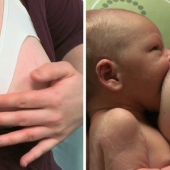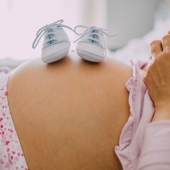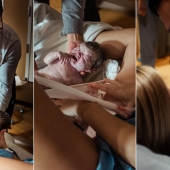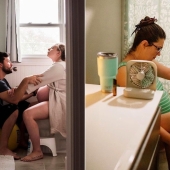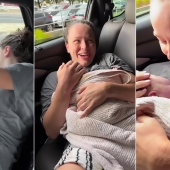Immediately after your baby is born, you will notice your baby may be very wet and covered in some really thick creamy substance known as Vernix. Newborn babies are not washed immediately because we want them to keep their temperatures up and stay nice and warm with their mum.
Your midwife will deliver the baby onto your chest. This is known as skin-to-skin or skin-on-skin. It’s the best place for your baby to be because it helps your baby adapt to life outside the womb and this also helps the baby get ready for its first feed.
If you have a caesarean section, you’ll still be encouraged to have your baby skin-on-skin. The midwife will offer you an injection to help deliver the after-birth, or the placenta as it’s commonly known. The umbilical cord will be clamped and cut: you might want to consider who is going to cut the cord. Sometimes your partner will want to do this.
Your baby will need to be examined. They may need a little bit of extra help just to start breathing. There will be very little time where you and your baby will need to be separated.
Unless your baby is born at home, your baby will need to be uniquely identified to you. This is done with two white name-bands normally put one on an ankle and one on a wrist.
Your midwife will also advise you about giving your baby vitamin K. This is an injection, a very small injection, given to your baby to help prevent a bleeding disorder.
You may need some stitches after the birth of your baby. This is done whilst you are still in the delivery room, still having a cuddle with your baby to distract you. Your baby will need to be checked by a paediatrician or a specially trained midwife. This newborn check is important to make sure your baby is fit and well.
About video: Midwife Suzanne Barber talks you through what will happen immediately after your baby is born.
- 3704 views

